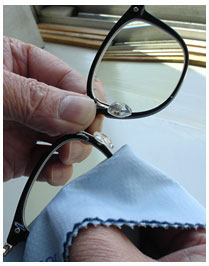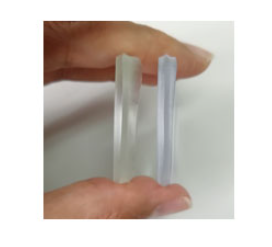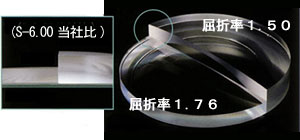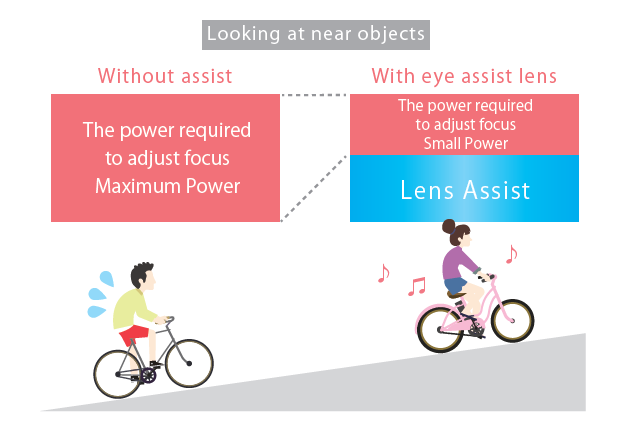The inquires we receive includes problems about eyeglass lens. Among them, we are going to introduce an example very unfortunate for both customers and TOKAI OPTICAL, in the hope that the same problem will not recur.
Example
It has not been even one year since I purchased my eyeglass, but line-like patterns have appeared on the lenses. Are the lenses defective?
We first asked the situation. The customer answered that he did not notice it in the daytime, but the light from oncoming vehicles looked dispersed during driving in the nighttime.
So, he checked his lenses carefully and found lines over the lenses.
As a result of an inspection of the lenses, most lines were attributable to heat.
The photos below show some of the lenses we inspected in the past. The three lenses shown side by side (appearance, partial enlargement, distortion check) are the same.
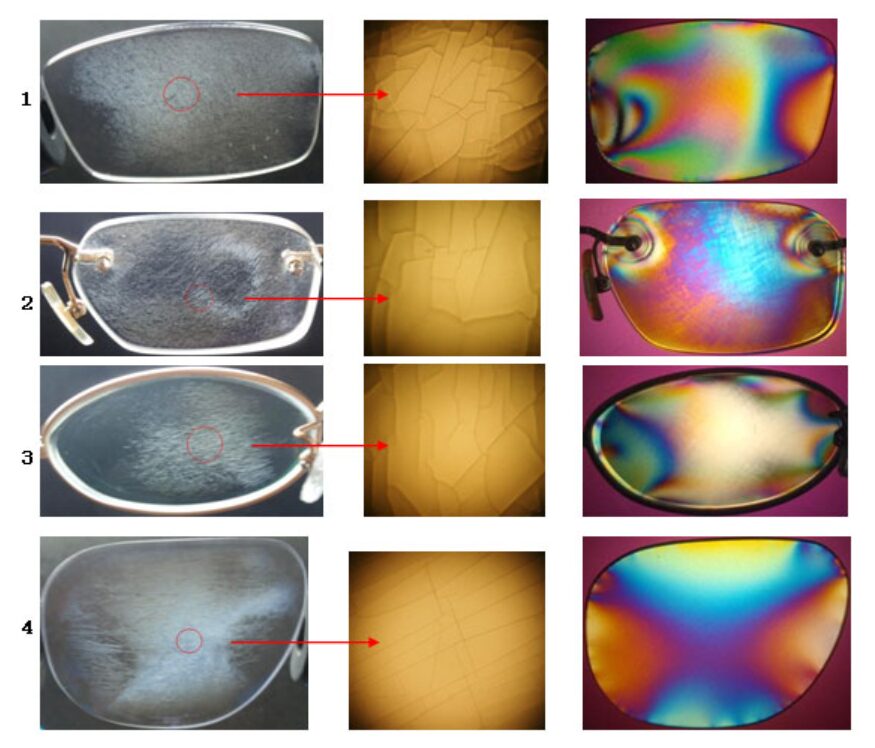
Our opinion
Several days have passed since the cracks appeared in these lenses, and they have become noticeable (at the initial stage, cracks are noticeable in the central area in particular, where stress concentrates). The characteristics common to these lenses are as follows: the lines appear over the damaged lenses; these lines penetrate in the coat layer on the surface of the lenses; the lines are cobweb-like patterns, not straight lines like wiping marks; and considerably strong distortion is produced.
Next, we explain the mechanism of how these lines occur.
A plastic lens consists of a lens base material in the center, a hard coating layer that protects the base material, an anti-reflection coating over the hard coating layer, and a hydrophobic coating layer over the outermost surface.
The base material of this lens is organic and expands when it is hot. However, the anti-reflection coating, which is inorganic, less expands than the base material.
Consequently, if the base material expands under the influence of heat, the anti-reflection coating cannot follow the expansion and develop fissure-like cracks.
Grounds for determining that the problem was thermal damage
The photos below show a lens to which high-temperature loads were applied for 20 minutes in an oven at 60℃, 65℃, and 70℃, respectively.
You can see the gradually expanding pattern from the change of the color of distortion.
Based on the fact that strong distortion as shown in the upper photo cannot be produced unless the lens is kept at 60℃ or higher and the base material expands as shown in the lower photo, we determine that such thermal damage caused the cracks.
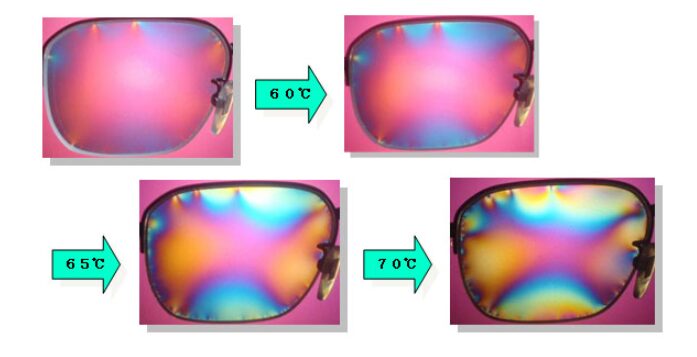
Actual example
However, a question remains.
That is, is there any situation in daily life in which eyeglass lenses are subjected to such an influence of heat? In the past, we performed an experiment for the influence of heat.
We measured the inside temperature of a car parked for an hour in the daytime at an outside air temperature of 23.3℃ on a day before midsummer.
The temperature immediately rose to 74.5°C on the dashboard and to 60°C or higher even around the rear seats and within the dashboard.
This means that storing eyeglasses inside a car is dangerous even if the season is not midsummer, they are stored in a place other than the dashboard, and the time of storage is short.
Some cars are provided with a dedicated sunglass holder, etc., but consider it to be a temporary storage space during driving.
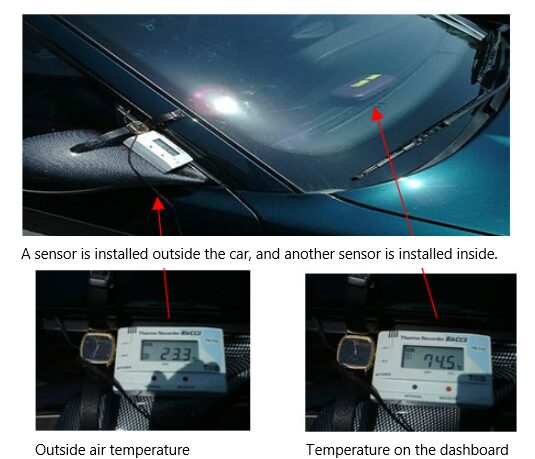
Next, a probable situation in daily life is radiated heat from a grilled meat electric griddle or from an iron plate, coal, etc. used in a barbeque, which reaches 70℃ or higher.
For example, temporarily putting eyeglasses near an iron plate in a yakiniku restaurant is very hazardous.
Hot air from a hair dryer or heating equipment may cause eyeglass problems, and an open-air fire, although infrequent, is another probable cause.
Since heat conduction is different between water and air, hot water of 50℃ in a bath feels considerably hot, but people can endures temperatures of 80℃ or higher in a sauna, etc. People rarely feel temperatures of 60℃ or higher dangerous and may not even remember the fact that their eyeglasses were subjected to the influence of heat.
Thus, even if we ask customers whether their eyeglasses were subjected to such situations, most of them say that they do not remember.
The phenomenon called a heat crack tends to repeatedly occur to the same person.
If such a situation occurs, it is probably impossible to resolve the problem even if lenses or the lens manufacturer are changed.
You may think that we shut our eyes to the quality of our lenses or our words are defiant. However, as shown in these photos, it is clear that the lenses are subjected to the influence of heat to such an extent that they expand. Identifying environments or situations that cause the influence of heat may be a shortcut to resolving the problem.
This is the end of this part. Although themes like this one may not be welcomed so favorably, we posted this article in the hope that the information herein will be of a little help to you to use your eyeglasses comfortably and for many years to come. Read it for reference.


